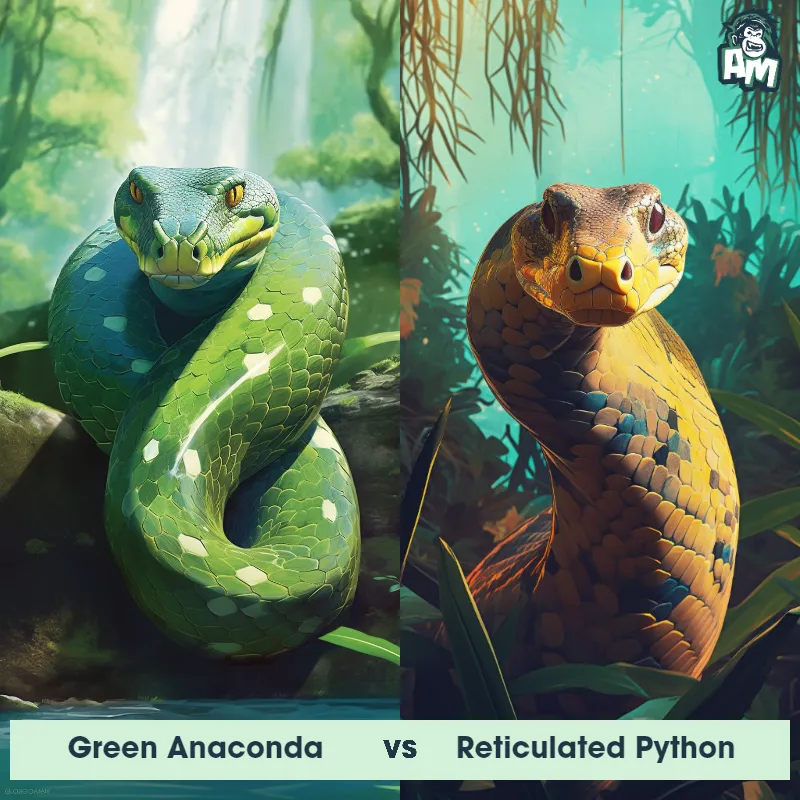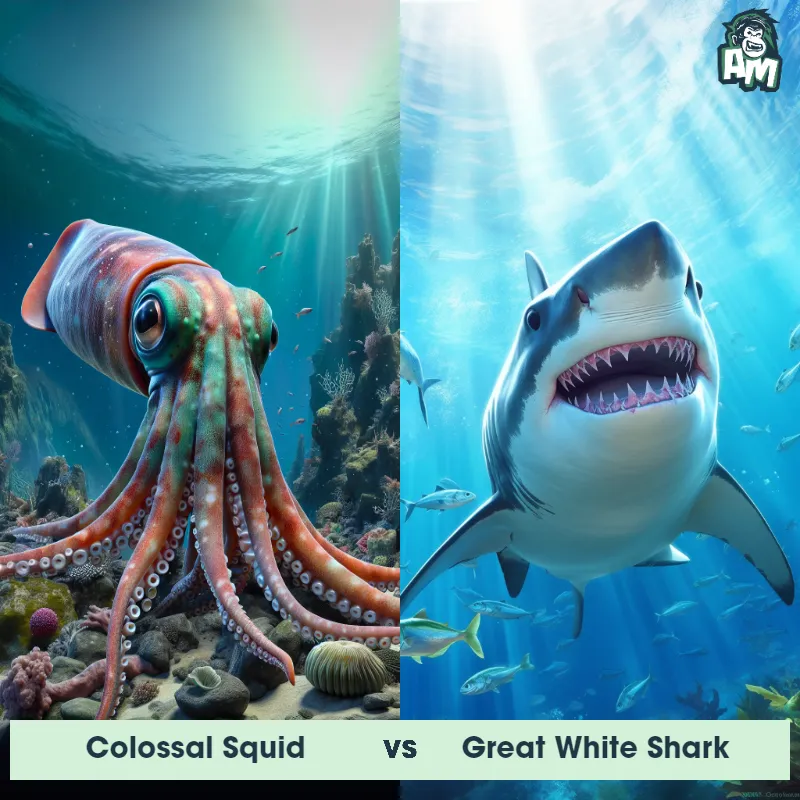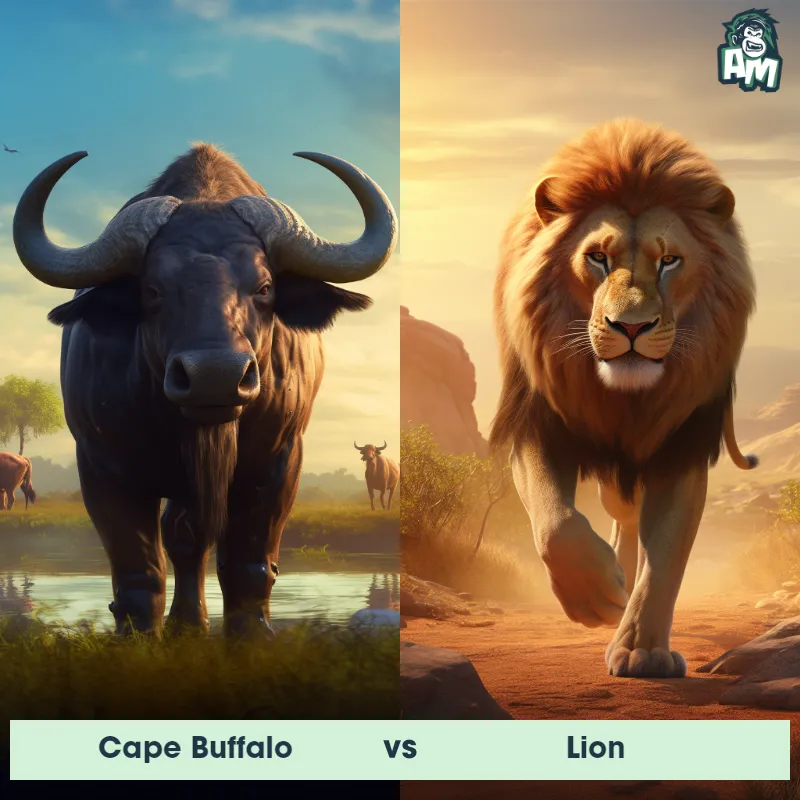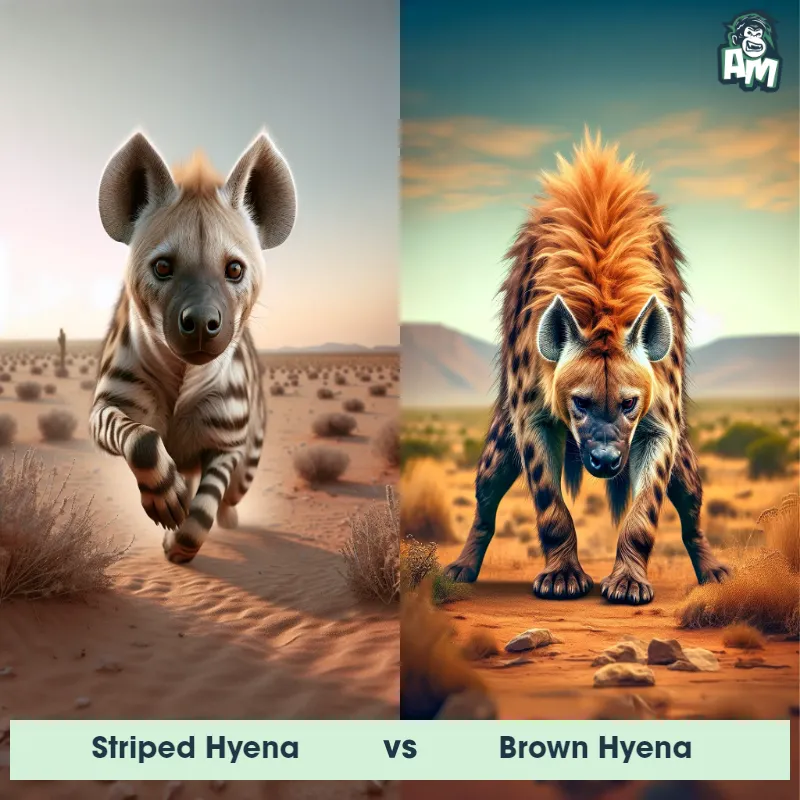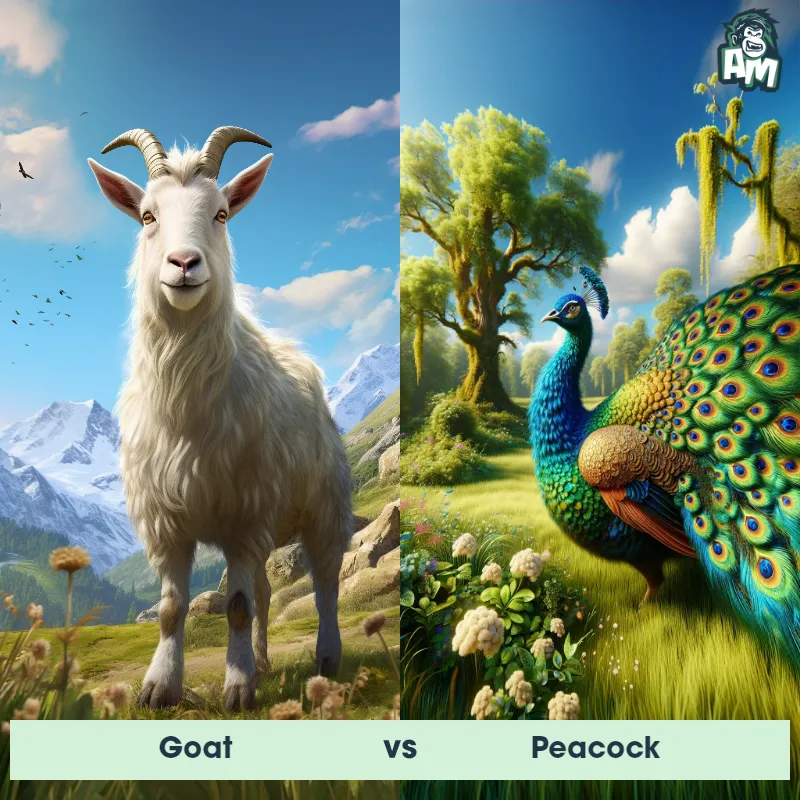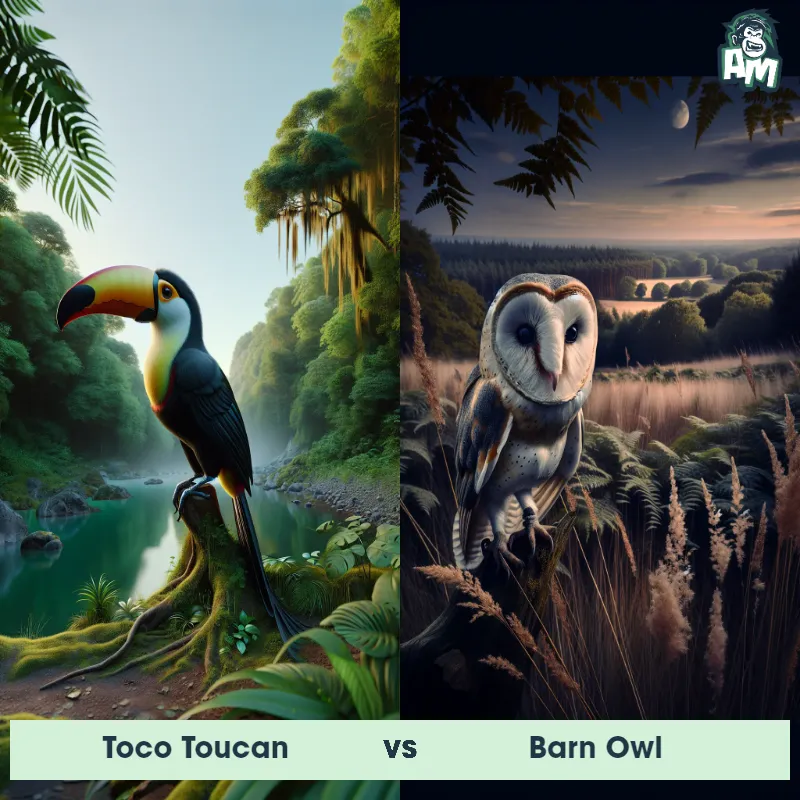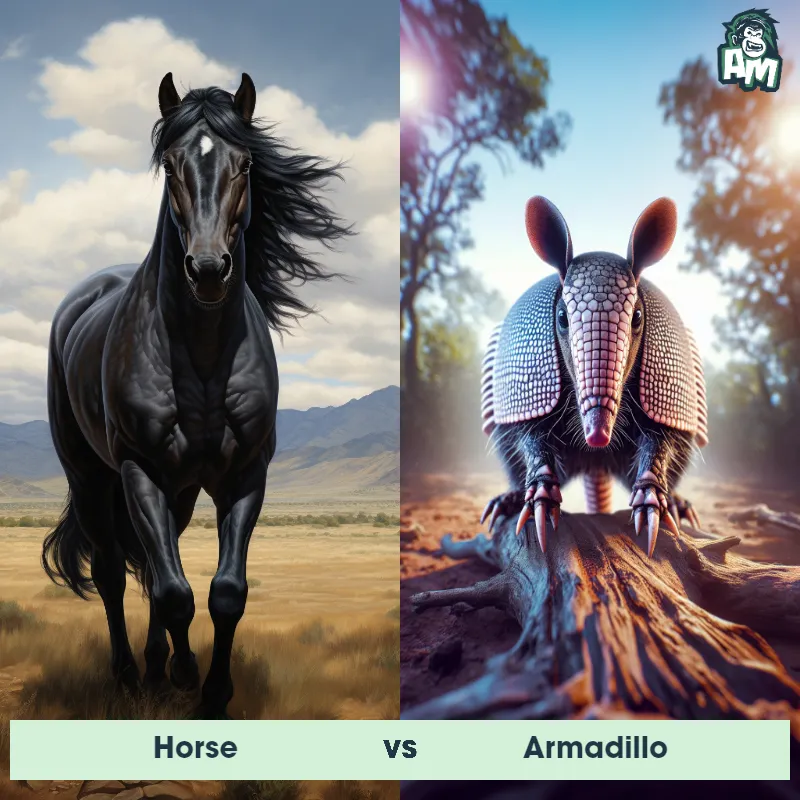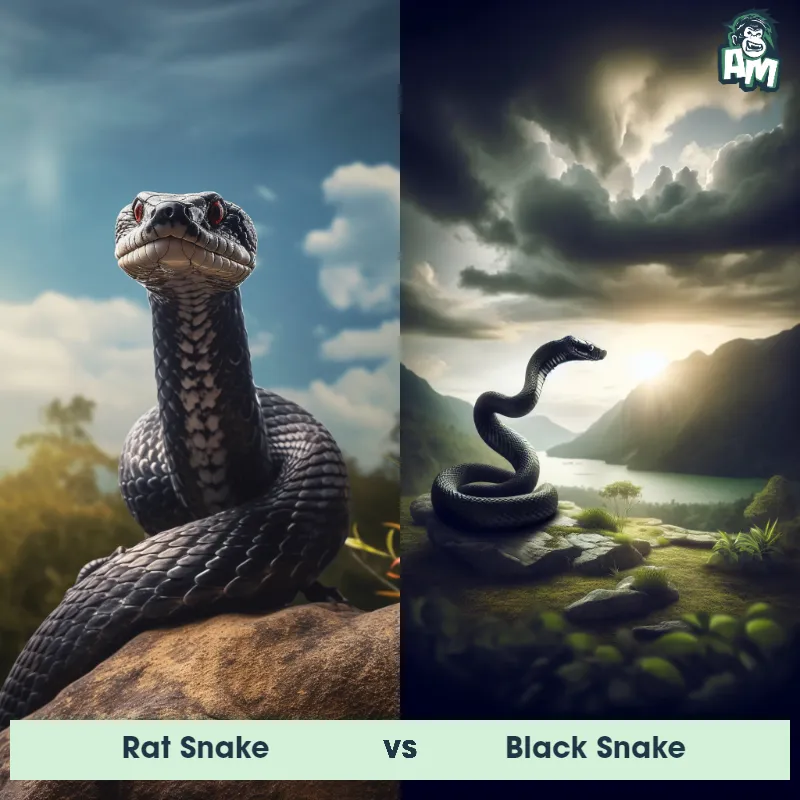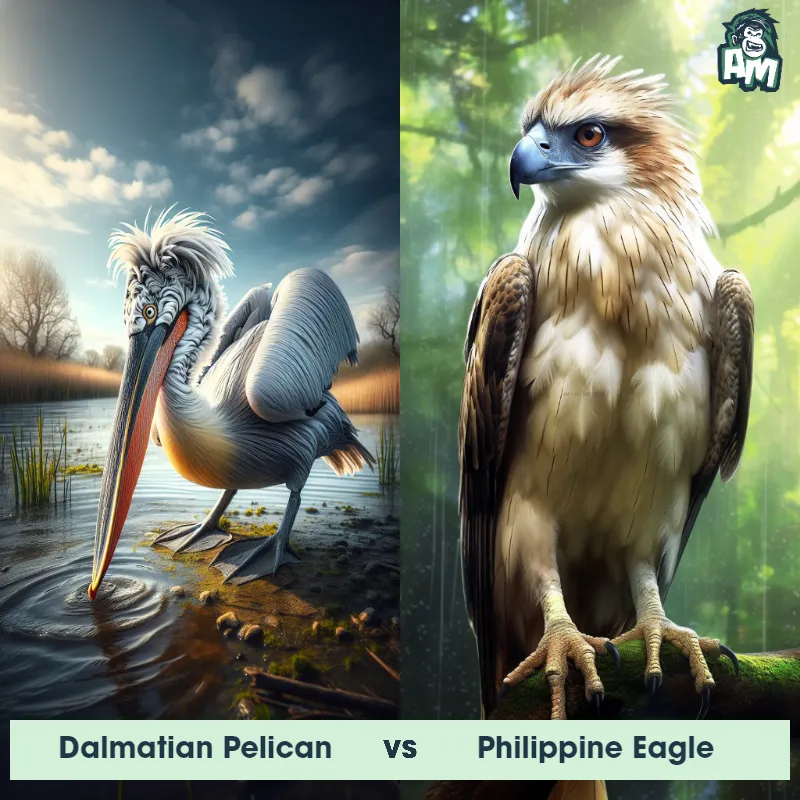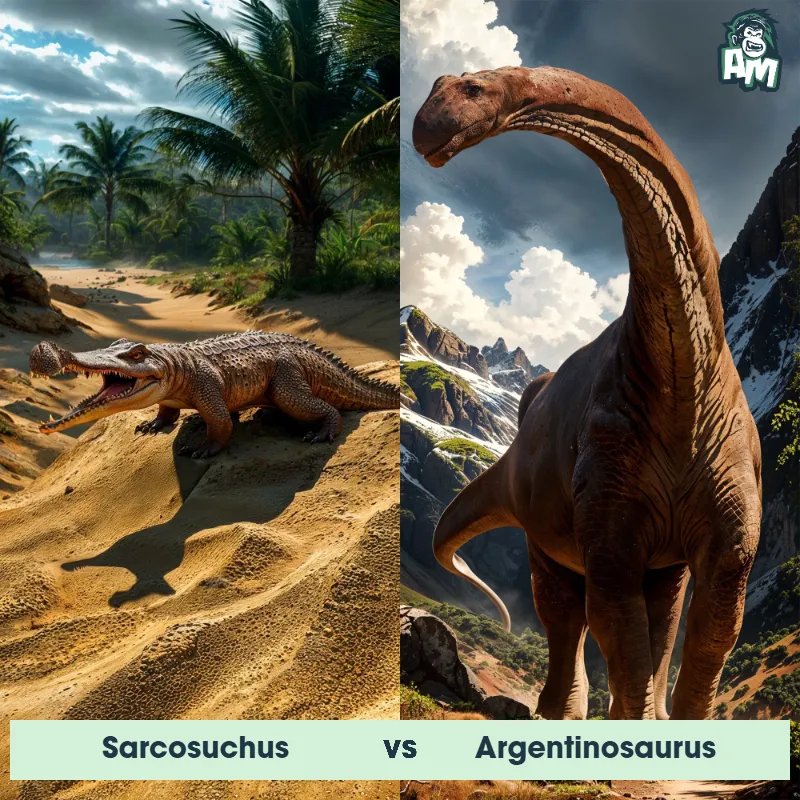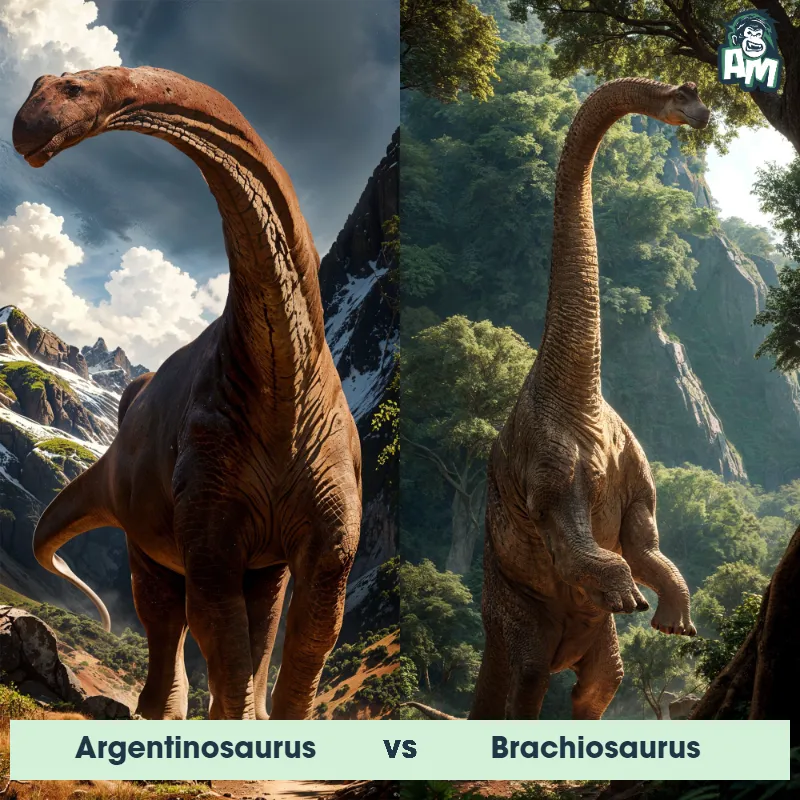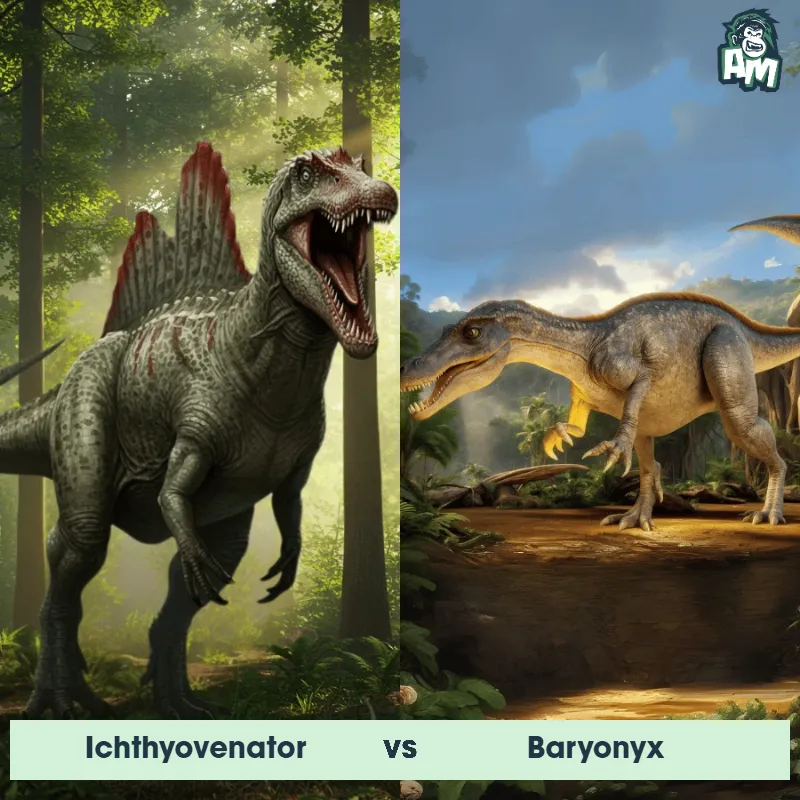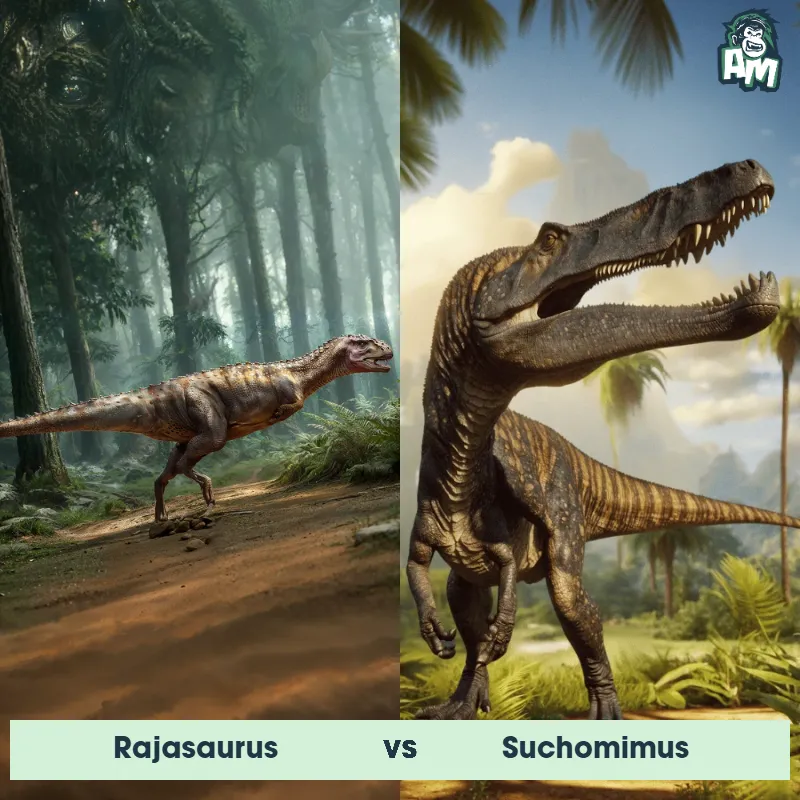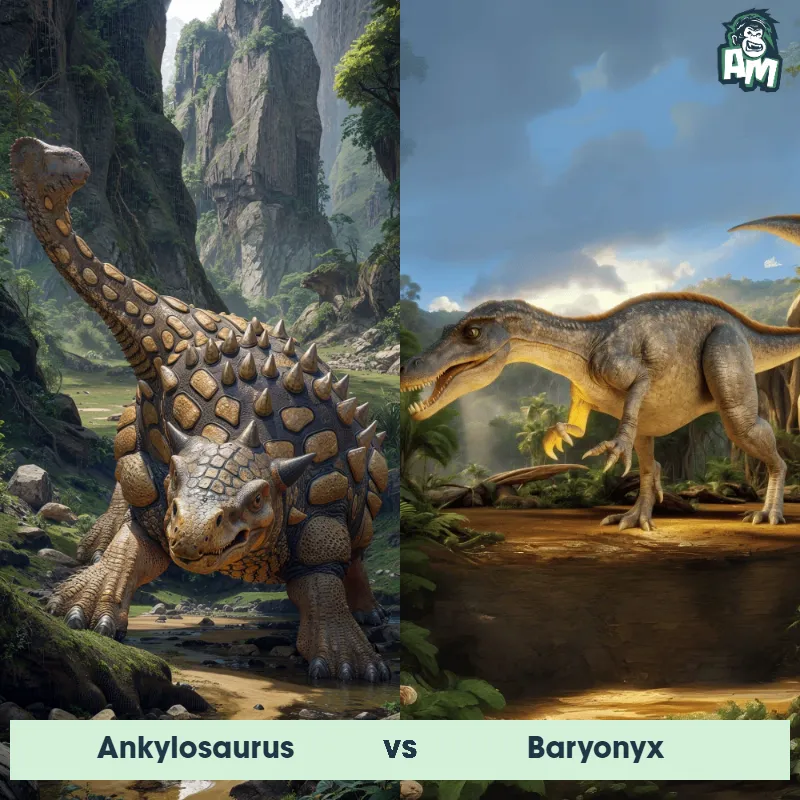Patagotitan vs SpinosaurusSee Who Wins
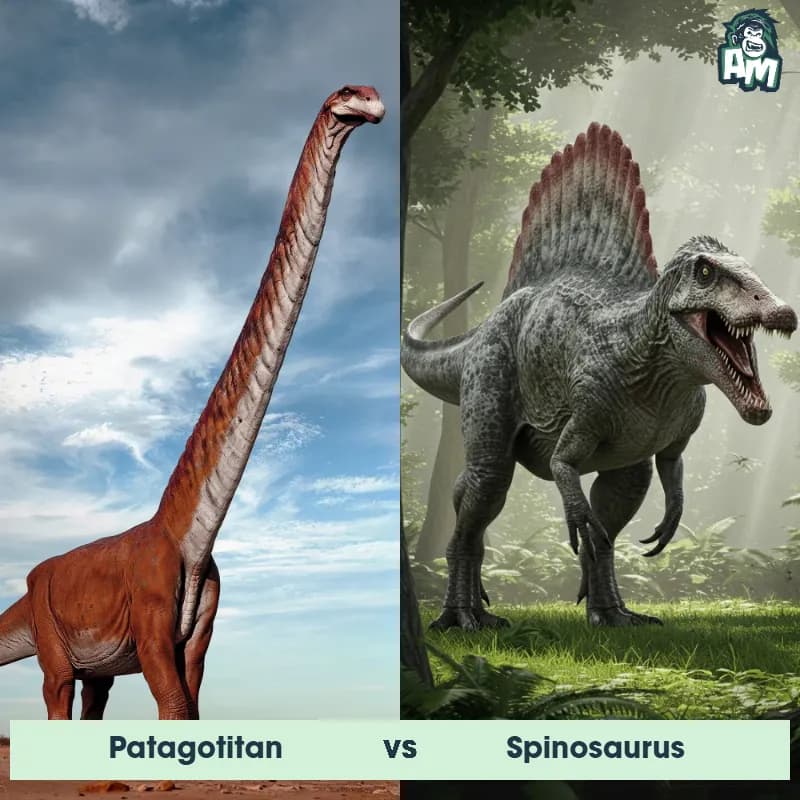
In one corner, towering above all with its colossal frame, the Patagotitan stands ready. In the other, the fearsome aquatic hunter, Spinosaurus, sharp and agile, prepared for battle. It's going to be a clash of titans, size against stealth!
Contender 1: Patagotitan
Patagotitan, also known as the Patagonian giant, was a massive herbivorous dinosaur that lived during the Late Cretaceous period. It is considered one of the largest dinosaurs to have ever roamed the Earth, with a long neck, tail, and powerful legs. Despite its enormous size, this titanosaur was believed to have had a relatively small head compared to its body.
Fun Fact: One remarkable fact about the Patagotitan is that it is estimated to have weighed around 70 tons, making it one of the heaviest land animals known to exist.
Contender 2: Spinosaurus
The Spinosaurus, also known as the "spined lizard," was a massive predatory dinosaur that roamed the Earth during the Late Cretaceous period. It is known for its distinctive sail-like structure on its back, which could reach up to 7 feet in height. With its long jaws filled with conical teeth and powerful forelimbs, the Spinosaurus was well-equipped for hunting fish and other prey in aquatic environments.
Fun Fact: The Spinosaurus had a special adaptation that allowed it to swim and hunt in water, making it one of the few dinosaurs with semi-aquatic abilities.
Matchup Stats
| Patagotitan | Spinosaurus | |
|---|---|---|
| Size | Approximately 100 feet (30 meters) in length | Up to 7 feet (2.1 meters) tall |
| Weight | Around 70 tons (63,500 kilograms) | Up to 8 tons (7,300 kilograms) |
| Speed | 18 mph (29 km/h) | 14-17 mph (22-28 km/h) |
| Key Strength | Powerful legs for defense | Powerful forelimbs |
| Biggest Weakness | Relatively small head | Vulnerable belly area |
Current Votes
Patagotitan vs Spinosaurus
See Who Wins
View More Matches
Looking For More?
Similar Matches
Scientific Stats
| Patagotitan | Spinosaurus | |
|---|---|---|
| Scientific Name | Patagotitan | Spinosaurus aegyptiacus |
| Family | Titanosaur | Spinosauridae |
| Habitat | Land | Semi-aquatic environments |
| Geography | Patagonia, Argentina | North Africa |
| Diet | Herbivorous | Fish and other prey |
| Lifespan | 70 years - 100 years | 20 years - 30 years |
Key Differences between Patagotitan and Spinosaurus
- Limbs: Patagotitan had four thick, pillar-like legs, while Spinosaurus had relatively shorter, stockier hind limbs and longer, more muscular front limbs.
- Body Structure: Patagotitan had a massive, long neck and tail typical of sauropods, whereas Spinosaurus had a shorter neck and a long, narrow snout like a crocodile.
- Habitats: Patagotitan lived in floodplains in what is now South America, while Spinosaurus was semi-aquatic, residing in river systems in North Africa.
- Spine: Spinosaurus had distinctive elongated neural spines on its back, likely forming a sail, unlike the flat-backed Patagotitan.
- Size: Patagotitan was larger, with an estimated length of up to 37 meters, while Spinosaurus measured about 15 meters.
- Skull: Spinosaurus had a long, narrow skull with conical teeth, while Patagotitan had a small, boxy head and peg-like teeth.



